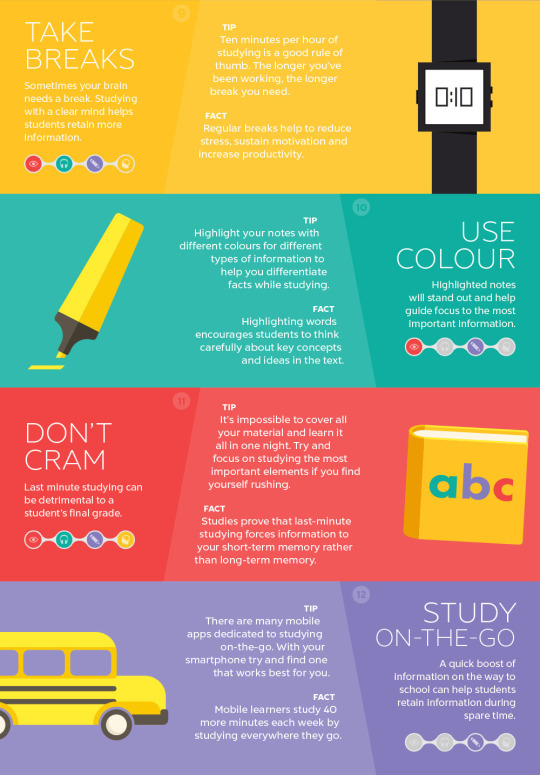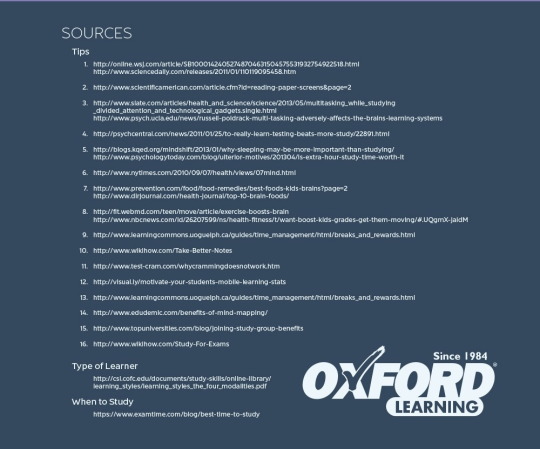Applying a minimalist survival-influenced philosophy to the graduate student experience. Musings and tips on travel, art, ideas, and life. Be prepared!
Don't wanna be here? Send us removal request.
Quote
Goddamn. Vanquest. Just... GODDAMN.
Me, preparing for a future review
0 notes
Photo

Higashi-Ikebukuro, Tokyo.
0 notes
Quote
I'm searching for a theme that doesn't suck. Tumblr's a lot like life in that way.
0 notes
Quote
Walked outside and saw a wall of riot cops. Felt normal.
0 notes
Link
Here’s how I book the cheapest flights in conjunction with ITA Matrix...
ENJOY!
0 notes
Quote
Do I really trust any 'survival' video that's more about handguns than it is about water, food, and shelter?
Anonymous
0 notes
Link
Hiker? Traveler? Don't want to die in the woods? Well you're in luck! Lifestraws are now on sale at Amazon for 12 bones. SUPER useful for traveling. I also suggest picking up Potable Aqua Water tablets and a Lifestraw Go bottle with a filter on it.
Great stuff to keep handy if you’re going on the road.
0 notes
Photo







An Infographic Of Useful Tips For All Types Of Learners
24K notes
·
View notes
Text
Essay Writing Crash Course - Arguments (and Others!)

OK, so you’ve got to write an argument essay on a test. Time is of the essence, and you’re nervous, you haven’t slept, you’re disappointed in the last season of True Detective, yadda yadda. We all have our reasons to feel “off.”
Let’s say you have 30 minutes to write this thing. First off, before you begin writing, read the prompt and take a deep, cleansing breath. Do the 5-2-7 technique and inhale for five seconds, hold for two, and then breathe out for seven. This will allow you to center yourself a bit. If you’re real nerved out and are a fast writer/typist, you may even want to do this twice; the calm you’ll gain will offset the “five minute panic clog” that destroys precious time... and yes, I’ve lost more time than that due to panic in the past.
(I suggest you practice this in non-study situations as well; it’s certainly helped me relax and I am a machine that runs on coffee, fear, and nervous energy!)
Now that you’re feeling a bit more relaxed and on top of things, let’s skip to the meat-of-the-meal and get you on the path to essay supremacy. Here are my tips for outlining and writing a great argument essay in a time crunch. These techniques will also work with other essay types as well. I recommend having good practice essays around to read as well, such as the ones you’d find in this Manhattan Practice book, and also this other one.
Step 1. Outline the whole essay paragraph-by-paragraph.
This is nothing special, but you’ll need an outline that will allow you to map your essay’s terrain. I suggest the standard model:
A. Intro / Precis
B. Argument Point 1
C. Argument Point 2
D. Counterpoint with Rebuttal
E. Summation and Conclusion
I’ve had success with this model for years and years, and I don’t think of myself as a particularly strong writer. I’m sure rhetoric/debate students are sick of it, but it works.
(Note: Some GRE test takers add another “argument point” paragraph; if you have time I suggest doing so on that particular test.)
Step 2. Assign a “point” to each paragraph.
Each paragraph should fulfill an aim. Look back over your outline and define a main point for each paragraph. These points are KEY; if you wrote your essay just using these points in sentence form it should still make sense.
Example prompt: “Some have argued that all zebras are NOT black and white. Write an essay explaining the extent of how much you agree or disagree with this argument. Support your answers.”
Point plan:
1. I disagree on the basis that the argument has major shortcomings.
2. The evidence as presented may be biased.
3. The term “all zebras” is problematic; it’s tough to confirm and non-committal.
4. Although it could be true, the absolutist nature of the argument would mean that it would have to be empirically and irrevocably verified.
5. In light of these points the argument’s over-reaching nature means it does not stand up to scrutiny, and thus I disagree with it.
These points are key. Your job is to take them, build on them cohesively one sentence at a time, test and rebut them in paragraph D, and then hammer your points home at the end. Easier said than done? Yeah, so start writing strong intros and strong conclusions and using them in conversation; these are directly applicable to your essays. Openings and closings are the toughest in my experience, so see step five for some ideas on how I approach them.

Step 3. Pick key terms, phrases, and transitions. Vary them AND stick by them!
The bird is the word and the word is the bird. Expanding your vocabulary enough to support your arguments and to avoid repetition is vital; this is why “meh” writers barely read and why AMAZING writers are voracious bookworms.
Don’t use the same verbs, nouns, and adjectives over and over; switch it up. Find different words for the same thing and reinforce your points to display your language skills. This sounds intense, but if you read enough example essays you’ll start to see established forms and variations reappear all the time, many of which are just glossed up basic sentences.* Hell, I straight out memorized and listed transition terms on my writing sheets for my last essay test and got a perfect score!
Check out this page for transition resources. All of them are worth knowing, no matter where you are in your schooling.
* = (”I ‘descried’ such permutations upon further re-examination.”)
Step 4. Populate the paragraphs.
This is where you get comfy and set up your base. Use your outline, points, and your wording as tent stakes to secure your paragraphs onto the grounds of Camp Cohesive Essay. Aim for at least four sentences in each paragraph and let them flow.
Keep an eye on the clock. You’re going to need to leave yourself time to re-read and correct anything later on. There are various diverging opinions regarding “population” technique; some say to write the first and last paragraphs first and then fill them in, others say to do the first sentence of every paragraph, and some say other approaches work better... but rest assured THE CLOCK IS YOUR FRIEND UNTIL IT’S YOUR ENEMY. Keep breathing, but don’t sleep on it!
Oddly enough, despite this taking up the lion’s share of the writing time you should be moving pretty quickly when you get to step four if you’ve worked with this model a bit. So practice. But remember the goal is to use each one of your points to...
Step 5. Nail the take-off and stick the landing.
You need to start and finish STRONG. To leave a lasting impression, you need to write the strongest possible introduction and conclusion you can to accentuate your points. Writing these is an art unto itself, so drill this when you get the chance. As much as it can be a cess-pool of anger, hatred, and whiny, self-centered annoyance (and yes, this is coming from a guy who dabbles in modern survivalism, where every second person’s opinion may as well be accompanied by “wahhhh me!”), Twitter is really good for this.
Opening Paragraph Example Guide - Acknowledge argument, state your position, explain how you’ll investigate this position in the paper.
Concluding Paragraph Example Guide - Restate points, acknowledge difficult aspects of argument, restate why those are negligible to your conclusion, complete everything with a strong closing sentence.
You can use these over and over again once you find a few you like. Rework them at will to complement your essay. Practice makes perfect.
(Ed. note - Dear Twitter: I await your high-paying job offer.)

Step 6. Take a breath and re-read.
Now that you’ve rocked this thing top-to-bottom, go ahead and do another 5-2-7 breathing pass and then re-read your essay.
Ideally you’ll have time for two passes. If so leave yourself time to read it for comprehension on the first pass and focus on minor issues during the second. Your foremost goal is to make sure your essay can be understood. Aside from ridiculous screw-ups in spelling and the like you should focus on the minute edits at the very last stage and read for comprehension first. Keep it simple and “stupid.” Strive for clarity first!
Assuming you’re not seeing any egregious errors and that your argument makes sense, you can now do your last bit of buff and polish work if there’s time to do so.
Step 7. Make final edits.
This is fairly self-explanatory... but please please please do this WELL before the time limit is up. After that all you have to do is turn it in.
...
I know there’s a weird feeling of paralysis when you first see a prompt and think “OH GOD 30 MINUTES WHAT AM I TO DO!!?”, but with time and practice you’ll feel more secure using this model and you’ll grow more assured of your ability to create cogent arguments in a small amount of time. The end goal is to stop second-guessing yourself and to make good points in a manner that establishes a united body of thought. After you’re there you just put your ideas on paper in a way that reinforces them sequentially. Confidence will come with time and effort.
If everything goes to hell -- or you’re anxiety-ridden test taker -- just make sure you have a great intro and a ripping conclusion. This is why a lot of people suggest writing the intro and conclusion first and then filling the essay up from the “middle out.” (Hi Erlich!)
Hopefully that won’t happen to you... it’s happened to me though, which is why I’m writing this sucker.
I’ve used these steps to make a 6.0 on the GRE essay section two times in the past year. Planned ‘em, wrote, tied my ideas together, read, re-read, corrected errors, turned them in. Again I’m not a great writer by any stretch of the imagination. The secret is drilling, repetition, and familiarity. Figure out your verbs, your alternative words, your analogues, etc. and go to town. You can easily memorize good set phrases so you’ll have strong transitions at the ready, and it’s never going to hurt you to get good at introductions and conclusions.
Educators say if you study hard enough and often enough you’ll eventually find yourself “testing easy.” It sounds like BS but it’s true; trust me. In my case I had test anxiety so great that it brought on regular, crippling panic attacks. But over the course of the past year and a half I managed to cow it enough to get into two top-flight PhD programs and win a doctoral fellowship award. It was just a question of getting acclimatized to the material and practicing A LOT with an approach that worked for me. Not bad for a guy whose last regular job was as a janitor, right?
Believe me: If I can do it, you can do it. Now go show that paper who’s boss.
#GRE#Essays#essay writing#grad school#gradlife#essay#studying#studytips#study#panic#anxiety#PhD#phdlife#test anxiety#breathing#panic attacks
9 notes
·
View notes
Text
YOU GOT INTO YOUR FIRST CHOICE SCHOOL!
April Fool’s. Back to your cash-strapped, sad-ass backup uni.
0 notes
Photo
Have at it!




my first set of studyblr icons!
feel free to use these but please make sure to reblog if you decide to use them!!! created using canva :))
(if anyone has any requests for specific icons I should make plz inbox me)
3K notes
·
View notes
Link
... I’m nervous, but I’m going. Hope there’s a Donna Haraway reference or 19!
1 note
·
View note
Text
I Bought a Walter Filter To Avoid Getting Sick. Here’s How I Saved Some Green.
"Life hack: Just put some damn tape on it!"
I’ve crossed America 4.5 times in the past month and my stomach has kicked my ass every step of the way. Seriously: If “bubble gut QA tester” was a job I’d be in the hall of fame for my recent contributions to the field. My apologies to anybody who has been downwind of me in the past 30 days.
There are a lot of factors that could cause you to get sick during travel; moron with a flu on the plane (”I gotta make the meeting!”), sitting next to the bathroom and letting pathogens destroy your insides, not getting proper food, being off your sleep schedule, circulation issues, stress, allergies, etc. It’s a real gamble.
I take precautions on the regular, too. I wash my hands AND carry sani-wipes that I’ll use on my tray table, entertainment system, seat-rests, and seatbelt. I take vitamin C pills, swear by hand sanitizer, and also rigorously avoid touching my eyes or mouth with my fingers in closed environments while being subjected to recycled air. I also drink tons of water and try to avoid excess amounts of alcohol and caffeine. Still, this past month... ouch.
... but I just did the two and two, and honestly? It’s probably the water. A gallon a day is no joke; it really helps me out. But strange water in strange places? It’s a bad look, and so I needed a water filter system that made sense. Enter this here heat, the "LifeStraw Go Water Bottle with Integrated 1,000 Liter LifeStraw Filter" two stage filter system. This bad girl is rolling with me from now on as part of the EDC pack AND for every trip. It’s the same Lifestraw system everybody you know swears by, but even stronger and built for day-to-day use.
(By the way I do *not* plan on drinking my pee through it or some such. I’m not that hungry for attention. Looking at you, YouTube!)
And how did I save money on it? I bought the pink one. For real. It’s 15 dollars cheaper than every other version of it, it’s still BPA free, and it’s not like I give a rat’s ass about “tacti-cool” looks or anything. And if the color’s a bummer for you? Spend 6 bucks on grip tape and make your bottle look like a Glock.
Bang. Fart no more.
Happy travels!
1 note
·
View note
Quote
I sneak in quotes from The Wire during conversations with my department head.
Anon. PhD student
0 notes
Link
People have been asking about the recent proposed changes to data policy... ie “selling your browser history.” That’s only part of why you should consider a virtual private network (VPN). The other benefits include you know, not having your data compromised, using the Internet however/wherever (”I can’t stream this here?!?” is some bullshit), and hiding your location information and browsing activity. If you’re interested we recommend TunnelBear, which our dear friend Lance hipped us to. Dig in and secure your web!
0 notes
Text
Hello World!
Just getting everything set up here. In a month I’ll be off to Tokyo, so I’m preparing for that at the moment. I lived in Japan for several years and visit a lot, so I’m going to be preparing a guide to post up here since I’ve been (gratefully!) giving out a lot of advice over the years about visiting.
Fun fact: We’ll be avoiding hotels. Why? Tokyo’s tourism industry is on a massive upswing, and has been for quite awhile, so hotels are CHOKED with people.
How do you avoid paying out hundreds of dollars for a hotel room? Stick around for the answer. I gotta knock out some reading and writing at the moment!
0 notes